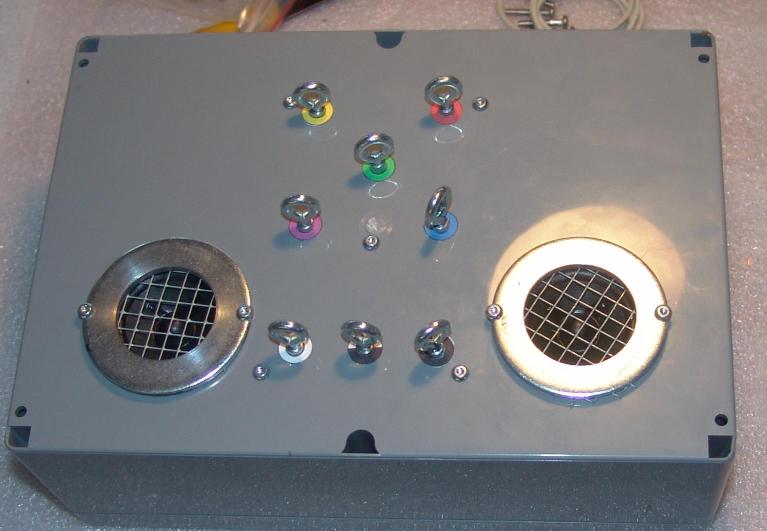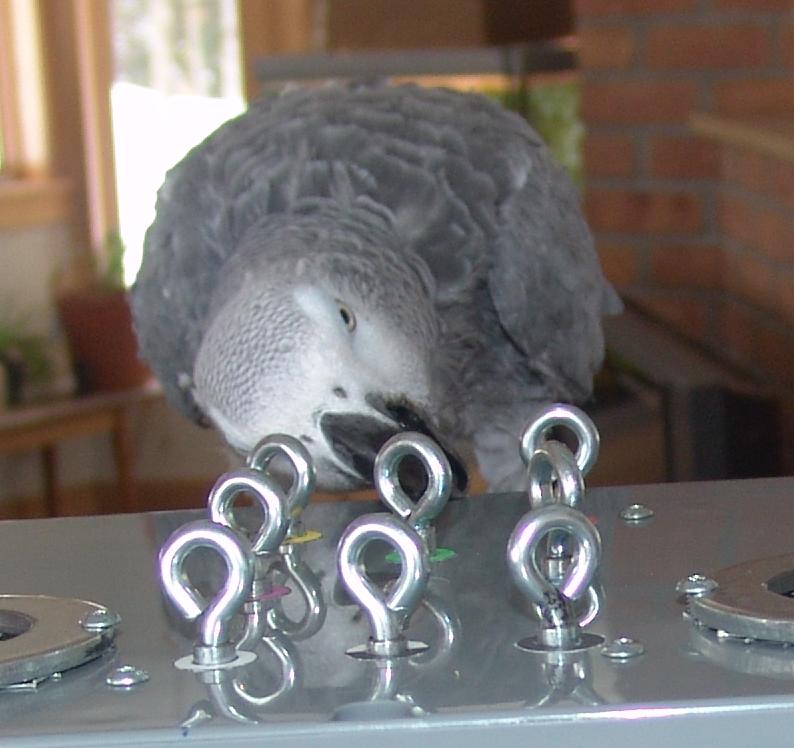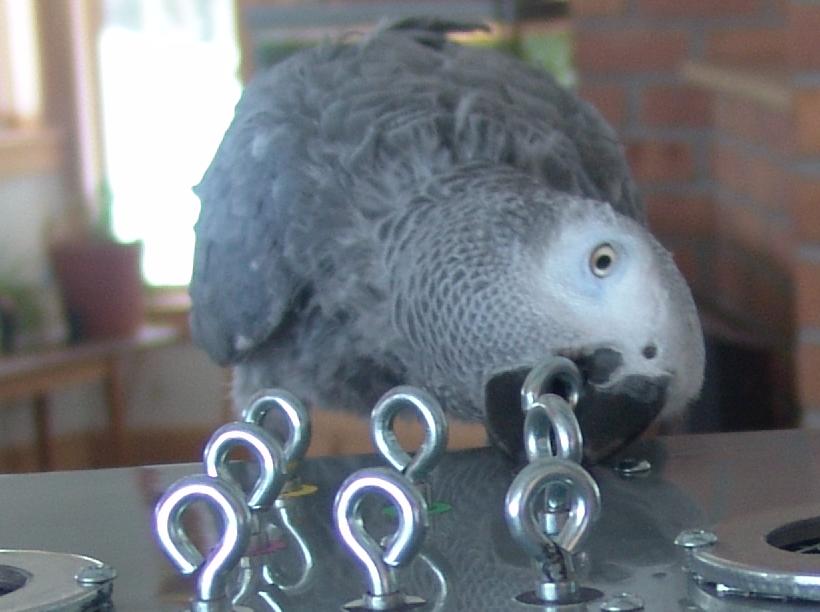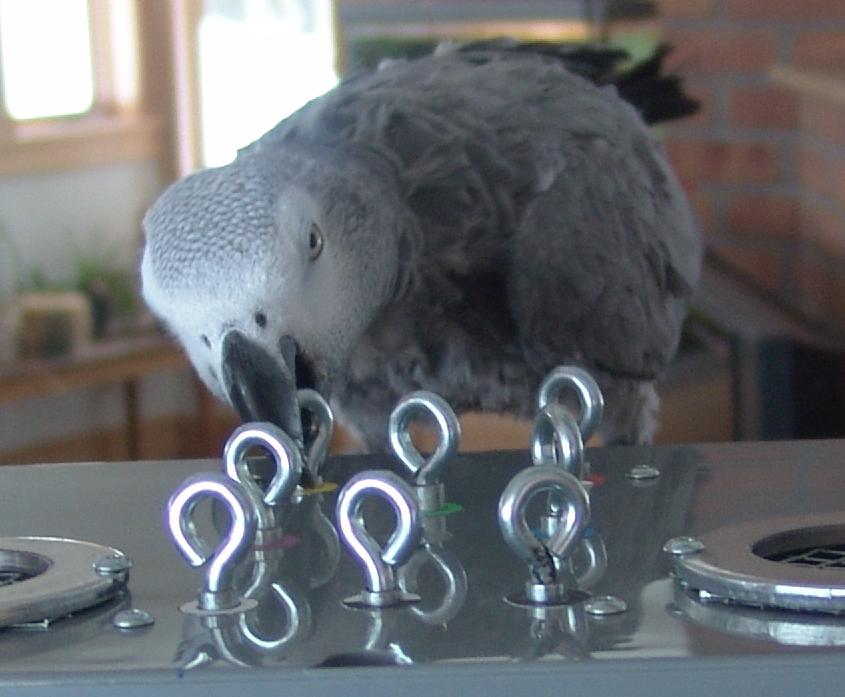The pPod: a musical playback device for parrots
I've owned African Grey parrots for about 10 years. The first one I purchased as a chick, and I named her Karma. The second one I purchased as an adult, and he came with the slave name of Tiger Boy, or simply Tiger.
Greys are intelligent and social animals, and they are not happy when left alone. They also get bored easily. Ironically, they also are very afraid of new things. So, same-old-same-old and they're bored; make a change, and they're scared. Walking the line can be challenging.
Researcher Irene Pepperberg has made a lot of news over the years as she explored the degree to which her Grey, Alex, could "think". In the end, it seems clear that Alex could count, recognize objects, categorize objects, and even engage in limited forms of conversation. Her books about Alex explain all of this in detail, and are well worth reading.
The Alex Foundation
Alex died suddenly in the fall of 2007, at age 30, perhaps 20 years before he was expected to expire. One result of his death was that Pepperberg wrote a book, "Alex and Me", summarizing their time together, and her research with him.
While reading that book, I discovered that she had spent some time working at the MIT Media Lab. One of the projects she worked on was an experimental device to see whether parrots could learn how to entertain themselves using a computer with a specially designed interface. She termed that experiment InterPet or the Parrot Digital Assistant.
Parrot Digital Assistant
I'd been thinking about how to enrich the environment in which my parrots live. While they have lots of toys, I am unable to spend as much time with them as I might like. And they love music. So, on Christmas day in 2008, I decided to create what I call the pPod, and iPod for my parrots. One reason for this particular project is that they dance around when I play music, often hooting and whistling along.
There were many challenges. Greys chew on everything, so the pPod could not be powered with an electrical line or cable; it had to be battery powered. And the speakers would have to be protected from both beaks and guano.
And regular switches would not work for a number of reasons. For one thing, Greys tend to bite and pull, not push, so push buttons would not be intuitive to them. For another, as I said, they will destroy just about anything in their path that isn't made of metal. So, I had to invent some custom switches for them to use.
I came up with a scheme where eye hooks stick out of the pPod, allowing the birds to grab onto them and pull on them. I added color coding at the base of each switch, to enhance the feedback that would occur when the songs were played. Each time they pull on a switch, a song plays.
And find a microcontroller to control the whole thing. And find an MP3 player that I could control. Plus an audio amplifier and speakers
In the end, the music is loaded onto a small memory card, and then inserted in the pPod. This means that one can customize or change the musical selections quickly and easily. And the microcontroller accumulates statistics about song selections, so that one can learn what kind of music the parrots like.
Six weeks later, I placed the first prototype pPod on the top of their cage. The result was predictable. They ran away from it.
Happily, the next day, they were climbing all over it and [accidentally] triggering the switches. Karma seemed more interested in chewing on the speakers than on triggering the switches, but she probably does not yet understand that "switch means music". But they both now sit around the thing, waiting for it to sing to them again. Tiger has already removed two of the colored rings that I had placed at the base of each switch, so I guess whe know what he thinks is important.
I hope that over the next week or two, they will figure out what it does, and start using it for their own purposes. More later if/when that takes place
If my birds end up using the pPod meaningfully, I will try to make this technology available to other bird owners.

Here are some YouTube videos showing the parrots manipulating the switches on the pPod. Unfortunately, YouTube is smart enough to recognize the music that is being played, recognize that the music is copyrighted, and mute the audio. The result is videos that are not very useful. The whole point of the videos is to show the parrots manipulating the switches, and changing the audio. Oh, well.
Video One
Video Two
Video Three
Here are links to the original videos from my web site. Sorry I had to convert them to WMV format in order to get them to be small enough to upload:
Video One (26 MB)
Video Two (20 MB)
Video Three (12 MB)


